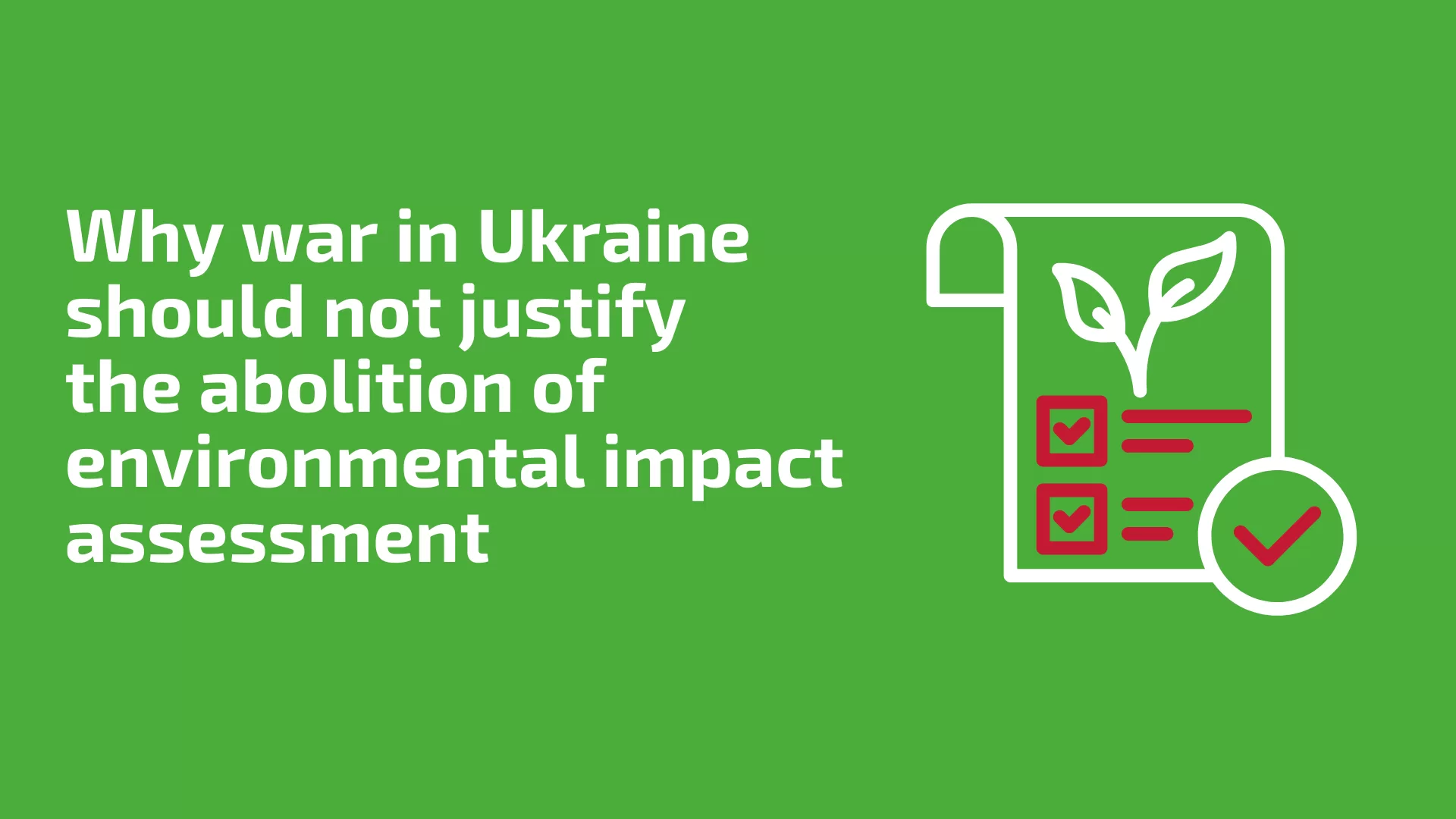Ukrainian environmental legislation does not comply with European standards. What are the consequences?
Ukraine is on its way to joining the European Union, where environmental protection is one of the most important pillars of development. Prior to the full-scale war in Ukraine, the environmental impact assessment (EIA) and strategic environmental assessment (SEA) procedures governing the implementation of potentially environmentally hazardous projects were not effective enough.
As a result, many companies exploited loopholes in the law and operated in violation of the law, polluting the environment and affecting the health and well-being of local residents.
The European integration process requires Ukraine to bring its legislation in line with European standards of transparency and efficiency, and the government is currently working on this. In September, the Ministry of Environmental Protection and Natural Resources released the Concept Note Defining the Scope of Deviations from the rules of Environmental Impact Assessment (EIA) and Strategic Environmental Assessment (SEA) can be waived during war and reconstruction.
But does the document’s content meet the requirements of the European Union? How does the government respond to Ukrainians’ proposals? How can poor-quality reforms threaten Ukraine?
Effective EIA and SEA as a tool for sustainable recovery
EIA and SEA are procedures that determine the possible negative impact on the environment and human health as a result of the implementation of projects and plans (construction, reconstruction, technical re-equipment, expansion, re-profiling, liquidation of facilities, etc.)
Ecoclub wrote about cases when decisions to build factories and plants were made without a thorough analysis of environmental impact assessment reports: investors violated the process of public discussions, did not take into account the opinion of Ukrainians, and bypassed legal requirements.
Ukraine is not only on its way to the European Union, but also to sustainable reconstruction, which in some places has begun in communities. When planning and implementing new projects, it is important to take into account past mistakes so that Ukrainians do not suffer from the operation of polluting enterprises. That is, to bring the system of EIA rules in line with the principles of Directive 2011/92/EU:
- Precaution and prevention – to prevent harm, not just to fix it;
- Taking preventive measures – primarily against sources of pollution;
- “polluter pays” – all costs associated with the prevention and elimination of pollution must be borne by the polluter.
Possible environmental impacts should be assessed at the earliest stages of all planning, development and decision-making processes.
What’s wrong with the Concept Note and what are the risks?
In May, the Ministry of Environmental Protection and Natural Resources published the first version of the Concept Note, a document that defines the limits when EIA and SEA can be waived. It was developed at the request of the European Commission as part of Reform 6 (Chapter 27 “Environment and Climate Change”) of the Ukraine Facility Plan (a €50 billion financial support program for Ukraine from the European Union over 2024-2027). The funds will be used to finance the state budget of Ukraine, stimulate investment, and provide technical support in the implementation of the program).
Ecoclub, together with other civil society organizations, analyzed the text and provided suggestions on how to improve it. The content of the document does not fully correspond to the reforms described within the Ukraine Facility.
The Concept Note also contradicts Directives 2011/92/EU, 2001/42/EC, and the Aarhus Convention: it does not specify specific projects or clear criteria for their implementation. The document does not specify how long the restrictions will last. Therefore, there is a threat that projects that are dangerous to human health and the environment will be approved during the reconstruction.
The Ministry of Environmental Protection and Natural Resources, as the developer of the document, did not indicate whether there are restrictions for projects that may have a negative transboundary impact (on the environment of other states). And also those that can be implemented in the territories of the nature reserve fund.
Therefore, environmentalists, together with NGOs and CSO networks, developed and sent a joint position to the government demanding that the document be finalized. The position stated that if the government decides to “deviate” from the EIA and SEA rules or limit them, in each case it must ensure that:
- conducting an environmental and health impact assessment study for projects that will not undergo EIA and SEA;
- developing an action plan to prevent or reduce possible hazards;
- open public access to information on the environmental impact of such projects;
- participation of Ukrainians in decision-making processes on environmental issues (in accordance with the principles of the Aarhus Convention).
Subsequently, the Ministry of Environmental Protection and Natural Resources published the final version of the note, which did not fully take into account the public comments. One of the few proposals was to retain the transboundary assessment.
In the final version of the note, the ministry indicated that the transboundary assessment would not be canceled during reconstruction projects. But if EIA is not conducted, then it is impossible to carry out a transboundary assessment, because they are part of the same process.
The Ministry of Environmental Protection and Natural Resources also noted that in the context of the war, the government was unable to develop a “comprehensive framework for ‘derogations’ from the EIA and SEA rules. The Ecoclub fears that many reconstruction projects and programs will be implemented without a proper environmental impact assessment, and public opinion will not be taken into account.
There is also a threat of slowing down European integration due to incorrect interpretation of European rules and the mechanism for implementing the reform. And the current version of the Concept allows for violations:
- The Aarhus Convention (the implementation of the reform in the current version does not provide for public participation in decision-making and access to information that contradicts the Aarhus Convention).
- The Espoo Convention (if EIA is not conducted, decisions on possible transboundary impacts will not be made).
- Directive 2011/92/EU on the assessment of the effects of certain public and private projects on the environment (even in cases of derogations, the public must be informed, and another form of assessment must be provided).
What’s next?
The developed Concept Note may become an obstacle for Ukraine during its membership in the European Union, when the negotiation process on environment and climate change begins. There is also a risk that many restoration projects will be implemented without taking into account the interests of the public, and their environmental impact will be unstudied.
The Ecoclub suggests that government officials develop a step-by-step plan for implementing the reform and identify responsible parties.
It is also important to introduce screening – the initial stage of project evaluation, during which it is decided whether an EIA and transboundary assessment are required.
Ecoclub offers the following algorithm for project evaluation:
– The entrepreneur applies to the Ministry of Environmental Protection and Natural Resources for the need to implement the project without an EIA and SEA (within the scope of the Concept Note). Informs the public (publications on community resources, the Ministry’s website, bulletin boards, etc.)
– The Ministry of Environmental Protection and Natural Resources considers each project to determine whether it will be subject to EIA and SEA. It issues a conclusion taking into account public opinion. It also determines whether a transboundary assessment is required.
– The Ministry of Environmental Protection and Natural Resources submits information to the Cabinet of Ministers or the Verkhovna Rada on each project separately to decide whether they can be exempt from EIA and SEA (since, according to the concept note, the final decision must be made by the Cabinet of Ministers or the Verkhovna Rada of Ukraine).











